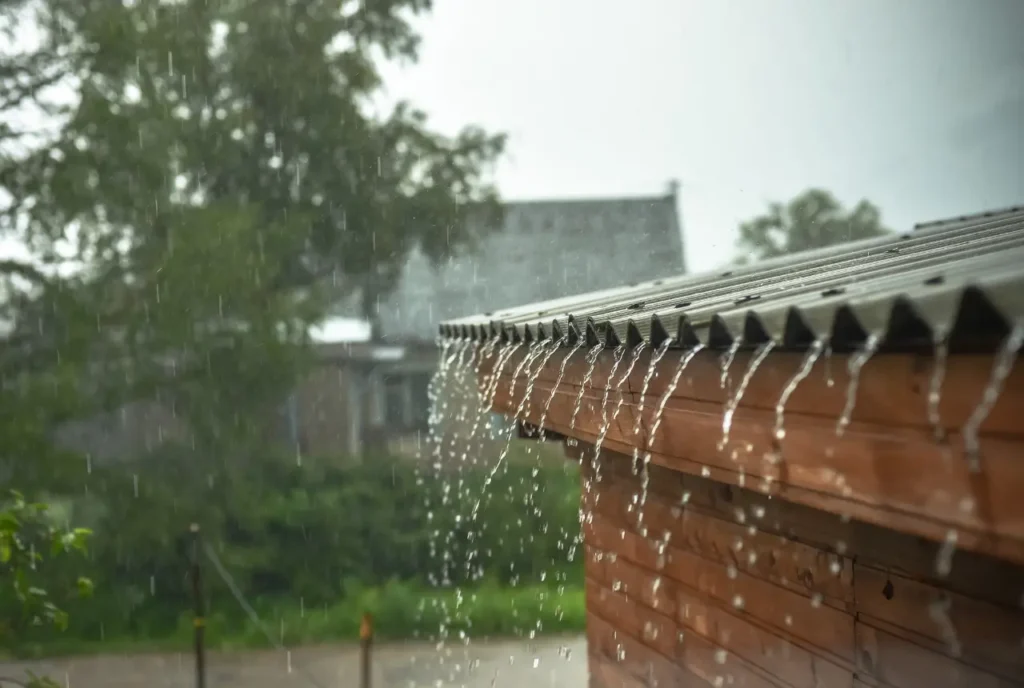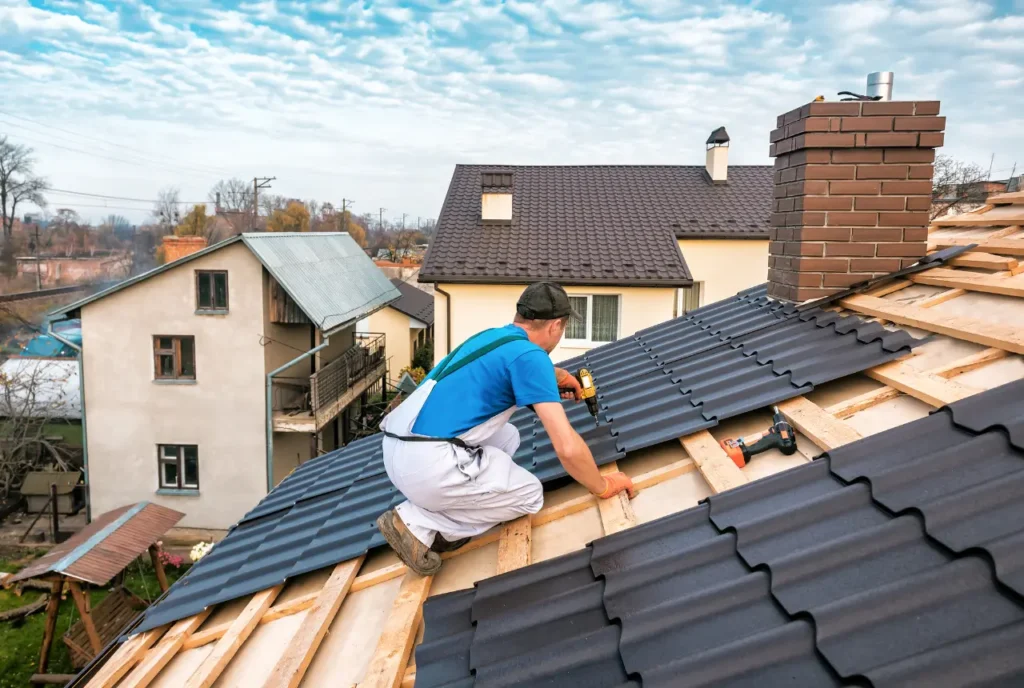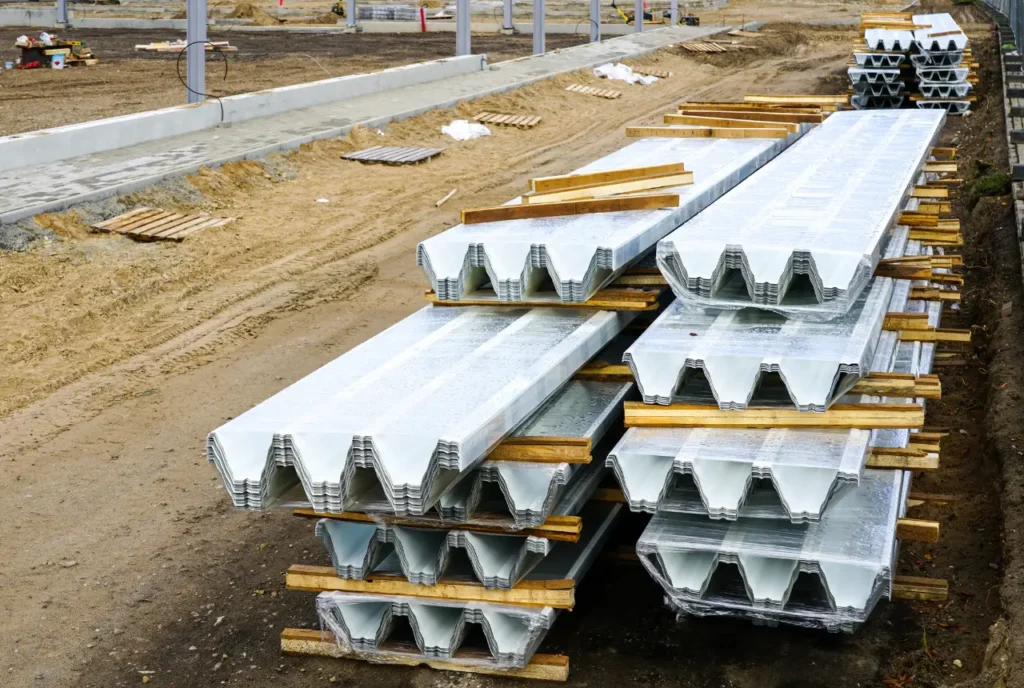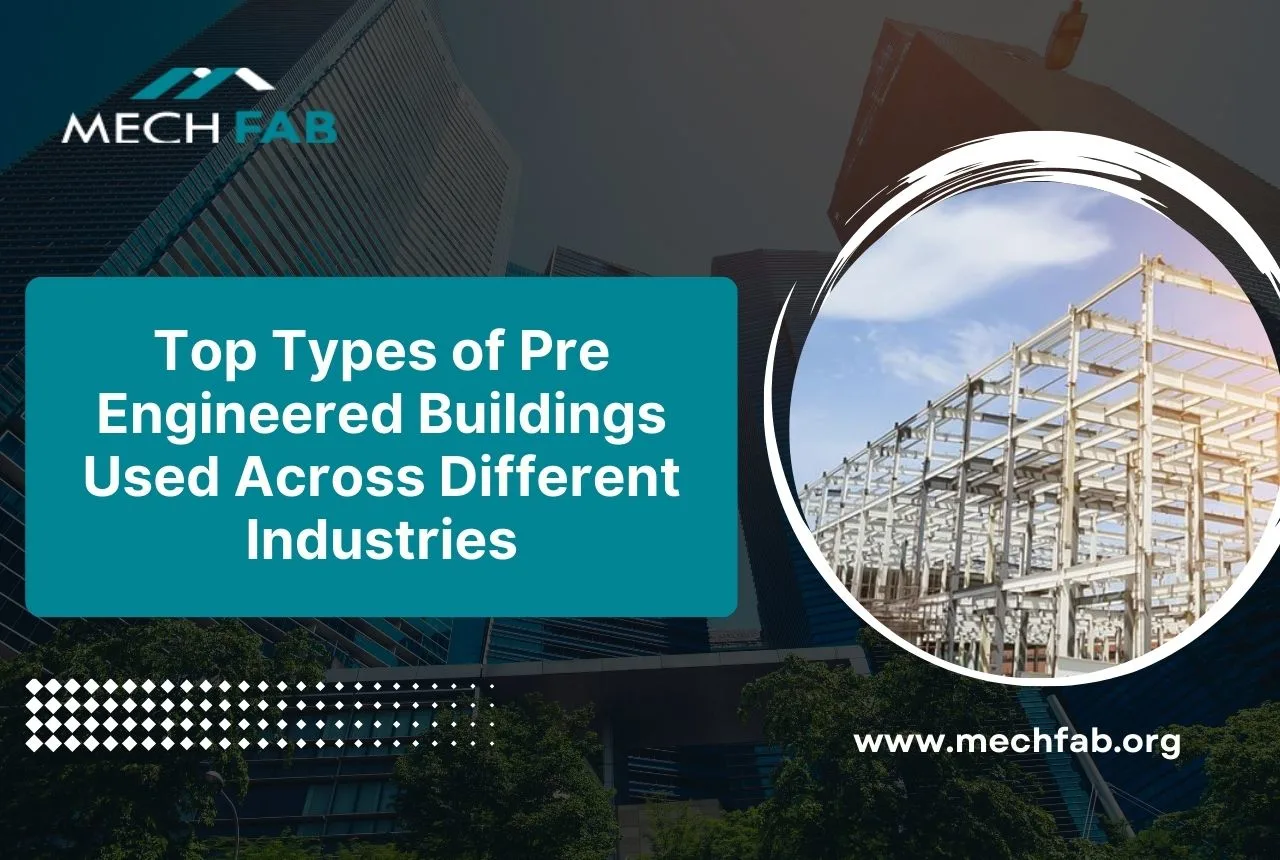Using the best roof systems for pre-engineered buildings is a popular choice for construction projects due to their efficiency and cost-effectiveness.
Just like the other components in PEB structures are made from prefabricated steel components, it’s the same for roof systems for pre-engineered buildings too.
These can be quickly assembled on-site and are ideal for a variety of uses, including being installed while making warehouses, factories, and commercial buildings.
As noted above, it is important to select the right roof system as it becomes crucial for the overall performance and longevity of the PEB structure constructed.
The roof has to be built properly as it needs to withstand various weather elements while complementing the building’s functionality and aesthetics.
Let us explore the five key factors to consider when choosing a roof system for your pre-engineered buildings by going through the details in this blog.
In the following sections, we’ll delve deeper into each of these factors to ensure you make an informed decision for your PEB project.
5 Key Factors for Selecting the Right Roof Systems for Pre-Engineered Buildings
Factor 1: Climate and Weather Conditions

Climate always plays a vital role in determining the most suitable roof system for the pre-engineered building (PEB). Here are some key weather conditions that might be crucial during construction.
Local Snowfall and Rainfall Levels
High Snowfall: Roofs must have a steeper pitch in areas with heavy snowfall to prevent snow accumulation and potential roof collapse.
One of the best options with superior snow-shedding capabilities is metal roofs, due to their strength and flexibility they are perfectly equipped to handle heavy snowfall conditions.
Heavy Rainfall: Some areas and locations face heavy and significant rainfall, hence it is necessary to have proper drainage to safeguard the buildings.
That’s why most builders consider roof systems with a slight slope and strategically placed gutters to channel the water runoff area efficiently.
Wind Speeds and Potential for Extreme Weather Events
Strong Winds: Wind uplift resistance is an important aspect necessary for roof systems installed in high-wind areas.
There are metal roofs that are particularly produced with concealed fasteners and are known worldwide for their resistance to high-frequency winds.
Severe Storms: There are multiple areas nationwide that experience severe storms ranging from hurricanes, tornadoes, or other severe weather events, it is important to add roof reinforcements or specific roof materials known for their resilience, such as impact-resistant metal panels.
Temperature Fluctuations and Thermal Shock
Rapid Temperature Changes: It is scientifically proven that sudden changes in temperatures can cause stress on the roof structure.
Therefore, it is necessary to install materials like metal, which are more susceptible to thermal shock than other materials.
Most of the builders consider all of these factors if the locations experience significant seasonal temperature swings.
When employing products with high thermal expansion coefficients, they might require specific design considerations to accommodate these changes.
Building Code Requirements
Local Building Codes: Building codes often dictate minimum roof load capacity and fire resistance ratings. Always ensure your chosen roof system complies with all relevant local building code requirements.
Consulting with a structural engineer or local building department can help navigate these regulations.
Factor 2: Building Use and Functionality

The intended use of your PEB will influence the optimal roof system selection. Here are some key considerations:
Internal Environment Considerations
Temperature Control: To regulate interior temperatures, most constructions deemed to use insulated roof panels that help reduce energy consumption for heating and cooling altogether
Condensation: Breathable roof underlayment is used to prevent condensation in buildings, to avoid the effects of activities that generate moisture within the building by necessitating a vapor barrier.
Weight Limitations: It is always important to consider lighter materials if weight restrictions exist. You ask why? Because when installing the weight of the chosen roof system impacts the overall structural load on the PEB.
Need for Natural Light: Skylights or translucent panels can introduce natural light into the building, improving energy efficiency and occupant well-being. However, their placement needs to factor in potential weatherproofing challenges.
Future Expansion Plans: Builders always consider roof system designs that can be easily adapted or extended when there are plans or anticipation for future expansion of the PEB structures.
Factor 3: Roof Design and Slope

Choosing the right roof design and slope involves balancing several important considerations:
Drainage and Snow Load
Slope: It is crucial to install steeper slopes that allow better drainage of rain and melted snow, especially in areas with heavy rainfall or snowfall to prevent water pooling and potential roof leaks.
Design: Like gable roofs, certain designs naturally shed water more efficiently than flat roofs. So most PEB builders consider these pattern-based roofs for efficiency.
Structural Considerations
Slope: Most steeper roofs require stronger support structures due to increased wind uplift.
Design: When installing complex roof designs with multiple planes or valleys requires more intricate framing, impacting construction cost & complexity.
Aesthetics and Architecture
Design: Roof design significantly influences a building’s overall aesthetic. Gable roofs have a classic look, while hip roofs offer a more modern feel.
Compatibility: The roof design should complement the architectural style of the house. A traditional gambrel roof wouldn’t suit a minimalist home.
Local Building Codes
Pitch: Based on different factors ranging from wind or snow load in the region, many localities have building codes that regulate the minimum roof pitch allowed.
It is an absolute necessity to abide by these regulations and rules to safeguard and enhance the longevity of the roof systems for pre-engineered buildings
You can easily choose a roof design and slope that optimizes drainage, withstands local weather conditions, complements the aesthetics of your home, and complies with building regulations.
All of these can be done just by considering the above factors carefully and reading the blog throughout.
Factor 4: Roof Material Selection

Pre-engineered buildings (PEBs) offer a variety of roof material options, each with its advantages and considerations:
Common PEB Roof Materials
Metal
- Types: Steel (galvanized or Galvalume), aluminum
- Durability: Highly durable, with good resistance to fire and impact.
- Lifespan: 30-50 years with proper maintenance (painting).
- Maintenance: Requires periodic repainting to prevent corrosion.
- Cost: Moderate initial cost, but lower maintenance costs over time.
- Sustainability: High recycled content available, good lifespan reduces the need for replacement.
Thermoplastic Polyolefin (TPO)
- Durability: Good resistance to UV radiation, chemicals, and oils.
- Lifespan: 15-20 years.
- Maintenance: Requires occasional cleaning to remove dirt and debris.
- Cost: Moderate initial cost.
- Sustainability: Can be recycled, white color reflects sunlight reducing cooling needs.
Polyvinyl Chloride (PVC):
- Durability: Excellent resistance to chemicals and fire.
- Lifespan: 20-30 years.
- Maintenance: Requires occasional cleaning.
- Cost: Moderate to high initial cost.
- Sustainability: Limited recyclability, dark colors can absorb heat.
Other Considerations
- Insulation: To improve energy efficiency and temperature control, many PEB roof systems incorporate insulation below the roofing material.
- Local Building Codes: As we have already discussed above, there are specific local building codes & regulations that need to be followed, therefore restricting certain materials to be employed in some specific areas.
Choosing the Right Material
The best roof material for your PEB depends on your budget, desired lifespan, maintenance preferences, and local climate.
- Metal: Good all-rounder, economical over time.
- TPO: Balance of affordability and durability, good for hot climates.
- PVC: Excellent chemical resistance, higher initial cost.
Remember: Consider consulting a roofing professional to determine the optimal material for your specific PEB project.
Factor 5: Building Codes and Regulations

It is essential to follow local building codes & regulations for safe and secure roof construction. The designated codes outline essential requirements that are paramount to ensure your roof can withstand the different elements and give protection to the building’s occupants.
Key Areas Covered by Building Codes
Load Capacity: Codes specify the minimum roof strength to support anticipated loads, including:
Fire Safety: To help the builders, building codes regulate the fire resistance capabilities of roof materials. This in relation helps to prevent flames from spreading during a fire outbreak, providing crucial time for the occupants to evacuate.
Material Compliance: Codes often specify acceptable materials for roof construction based on fire safety ratings and other performance criteria.
Ensuring Code Compliance
- Qualified Engineer: It is essential to work with a properly qualified structural engineer, as it becomes crucial to complete complex projects. An expert and experienced engineer can give you the best analysis regarding your specific site conditions, building design, and local codes to determine the appropriate roof design and ensure compliance.
- Building Permit: It is of utmost importance & necessity to obtain a building permit as it is mandatory before starting roof construction. The entire permitting process involves submitting plans reviewed by the code officials to verify compliance.
Benefits of Following Building Codes
- Safety: Building code adherence safeguards the structural integrity of your roof, protecting occupants and the building itself.
- Insurance: Most insurance companies require code-compliant construction for coverage.
- Investment Protection: A code-compliant roof increases the value and longevity of your building.
By understanding and adhering to building codes, you ensure a safe, reliable, and code-compliant roof system for your project.
Conclusion
In summary, there are five important factors to carefully consider when choosing a roof for your pre-engineered building: the design and slope of the roof for drainage and structural integrity; the choice of materials for sustainability, cost-effectiveness, and durability; compliance with local building codes for wind, snow, and seismic loads; fire safety regulations; and, lastly, the significance of consulting a qualified engineer to ensure code compliance.
You can make sure that your roof system is sturdy and functioning, protecting your building and its people for many years to come, by carefully considering these criteria. Don’t be afraid to consult a qualified roofing contractor or engineer for the best outcomes.






